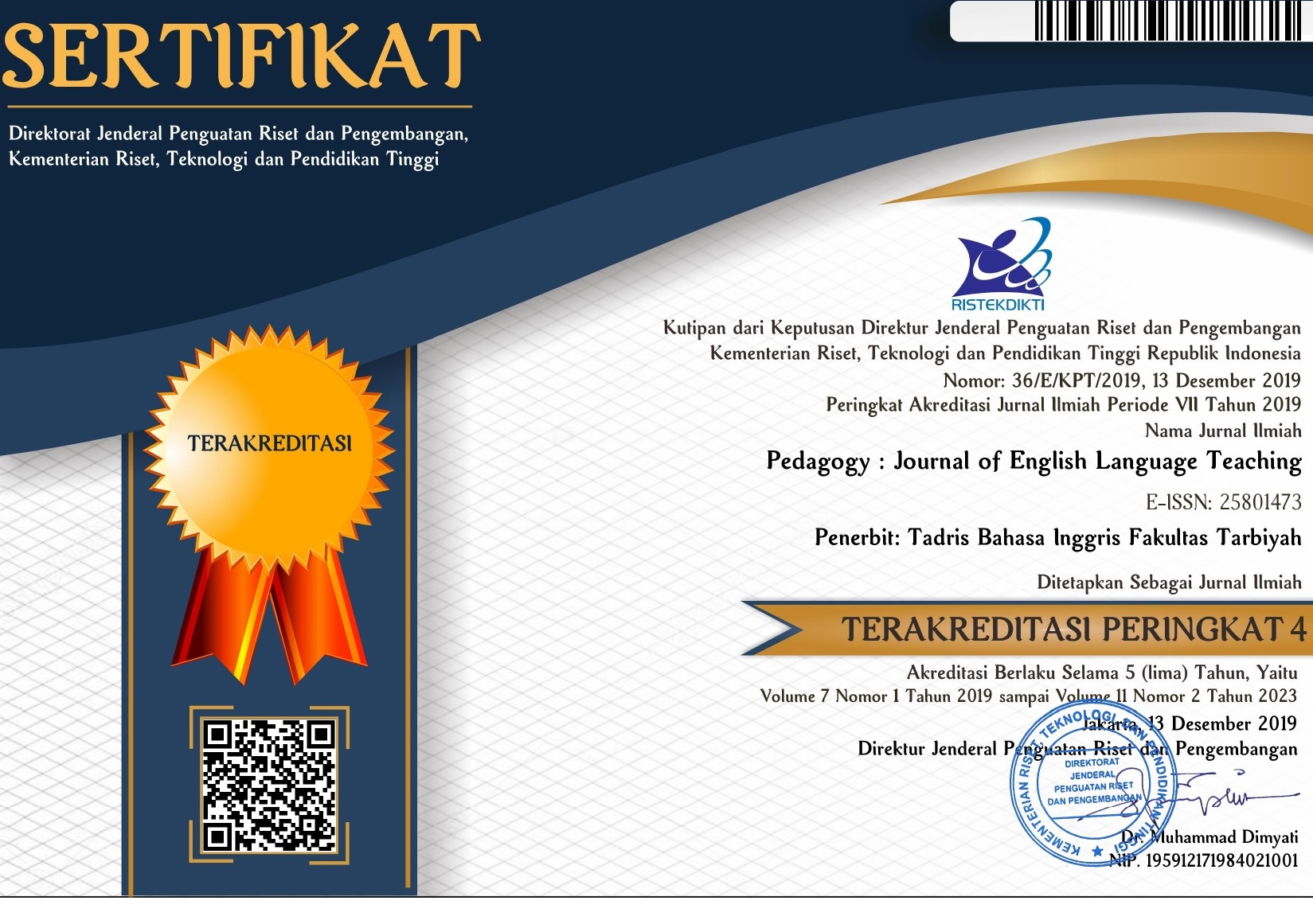ICT Integration in English Foreign Language Class: Teacher's Voice in Perceptions and Barriers
DOI:
https://doi.org/10.32332/joelt.v10i2.5168Keywords:
barriers, EFL, ICT integration, perception, teachers’ voiceAbstract
This study investigates how primary English teachers integrate ICT into their English class practices in primary school settings. It specifically describes the primary English teachers in integrating ICT into their online classes and the teacher's perception of the function and challenge of integrating ICT in English language teaching. Three English teachers teaching at primary school were recruited as the participants in this study. Framed within a qualitative descriptive study, the researcher collected the data by observing and interviewing the teachers. In doing observation, the researcher used the instruments, such as video records and notes; for interviewing steps, the researcher used audio recordings. The data were analyzed using an interactive analysis model by following steps, namely transcribing, classifying, describing, and interpreting the data. This study concludes that integrating ICT into the teaching and learning process with clear instructional plans has advantages that help students in learning effectively. ICT still has challenges for teachers, like the poor state of the internet and the lack of school and home facilities. It is recommended for schools, teachers, and students be better prepared to use ICT by providing adequate internet connections and providing training to teachers or students.
















